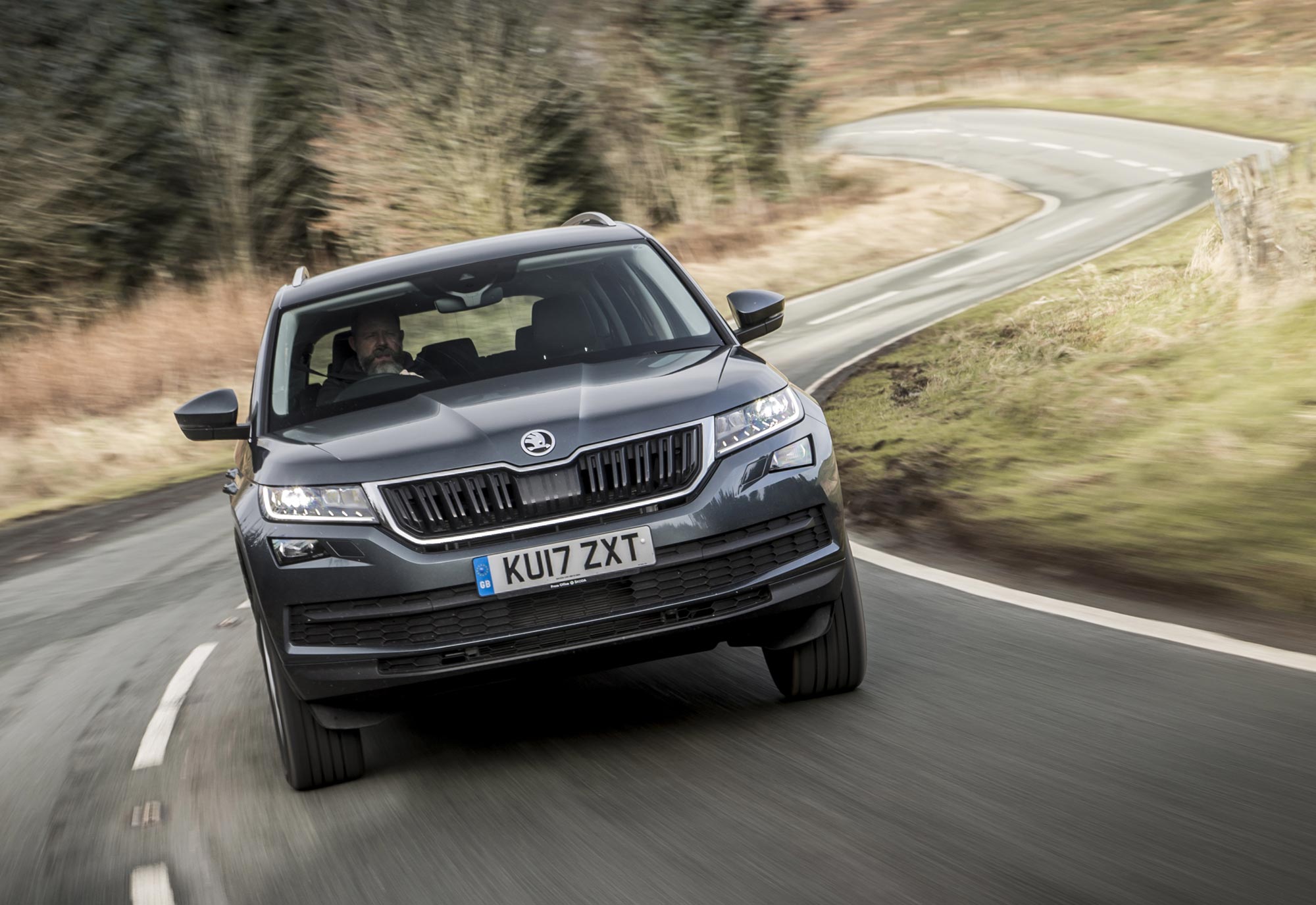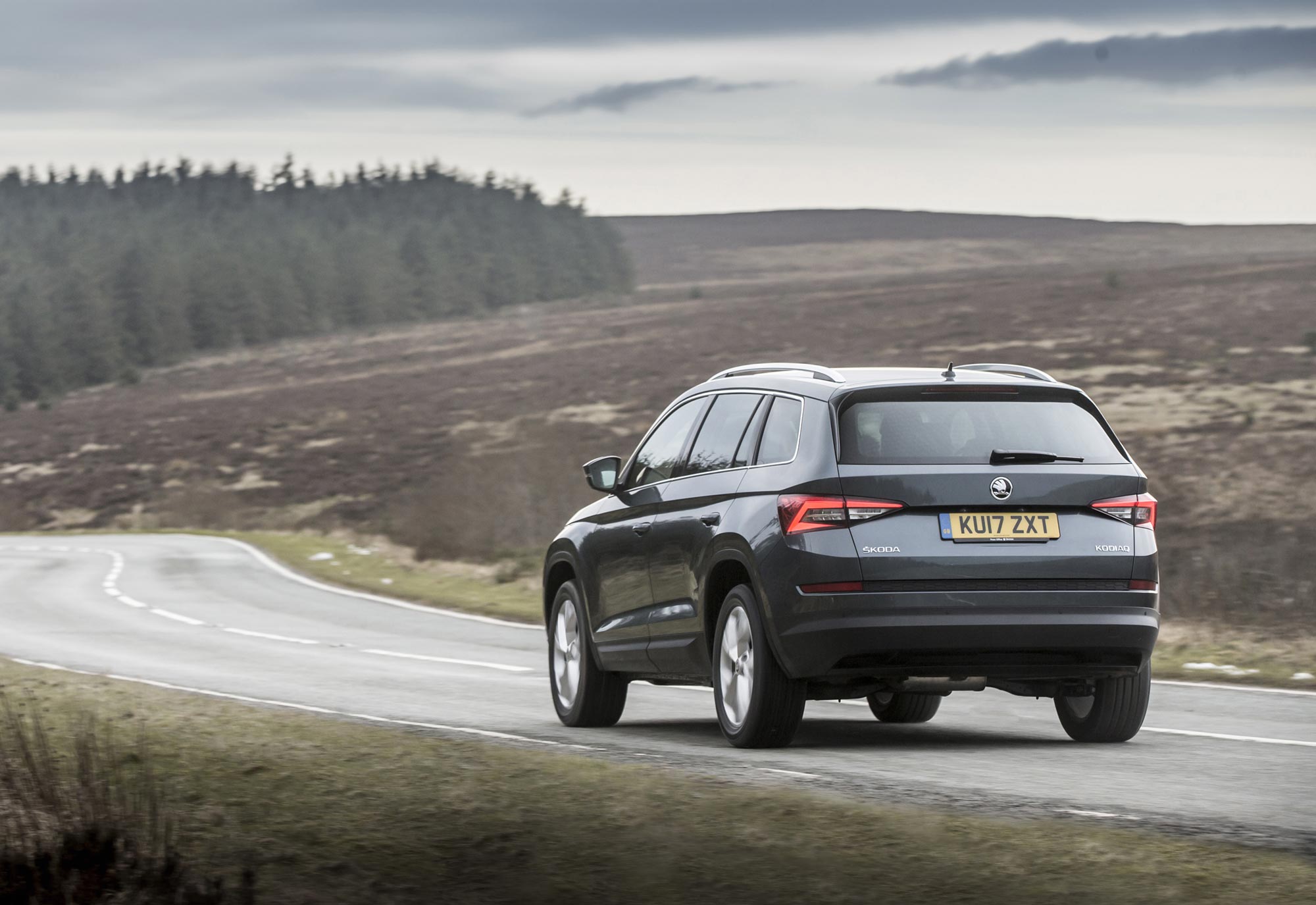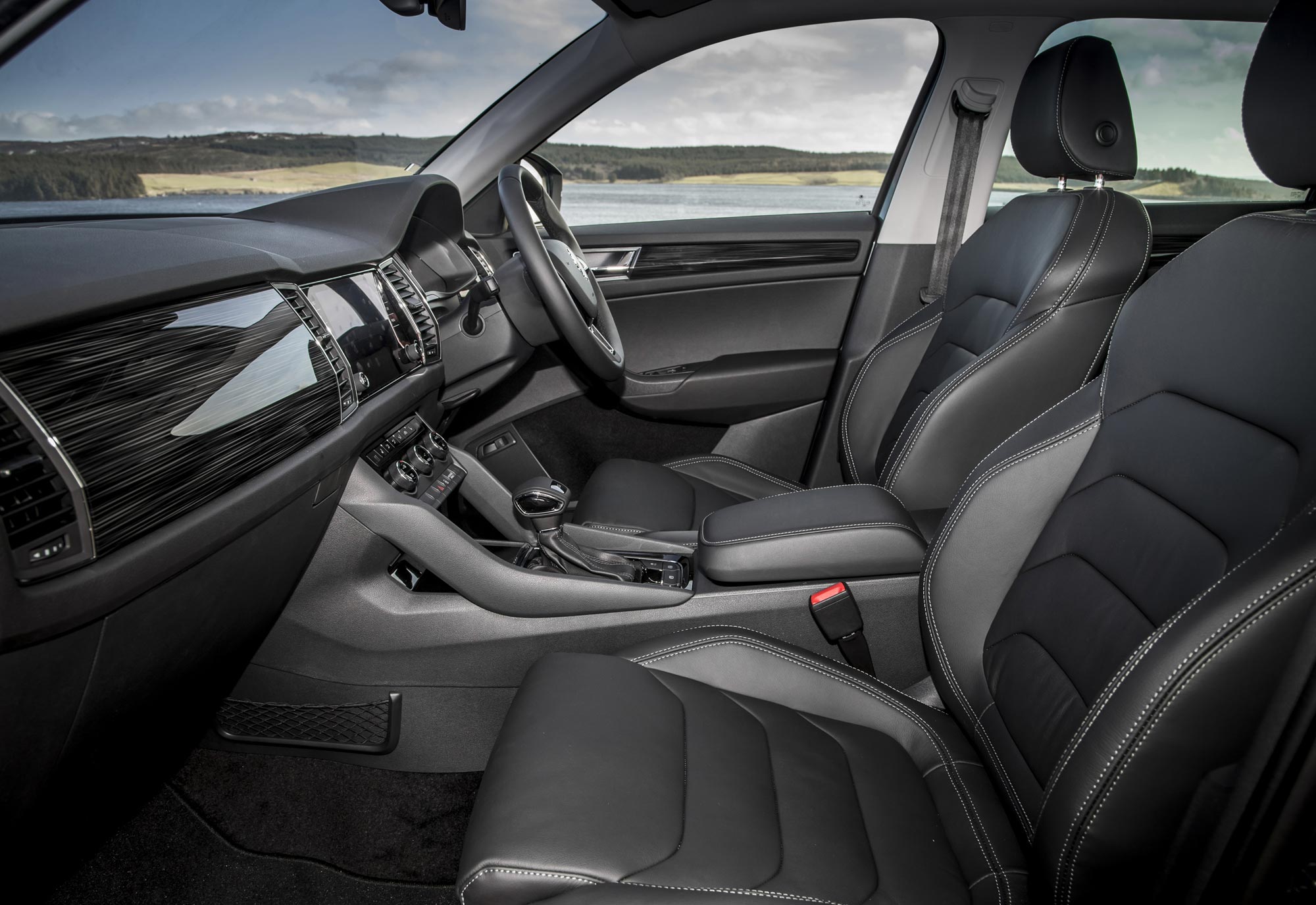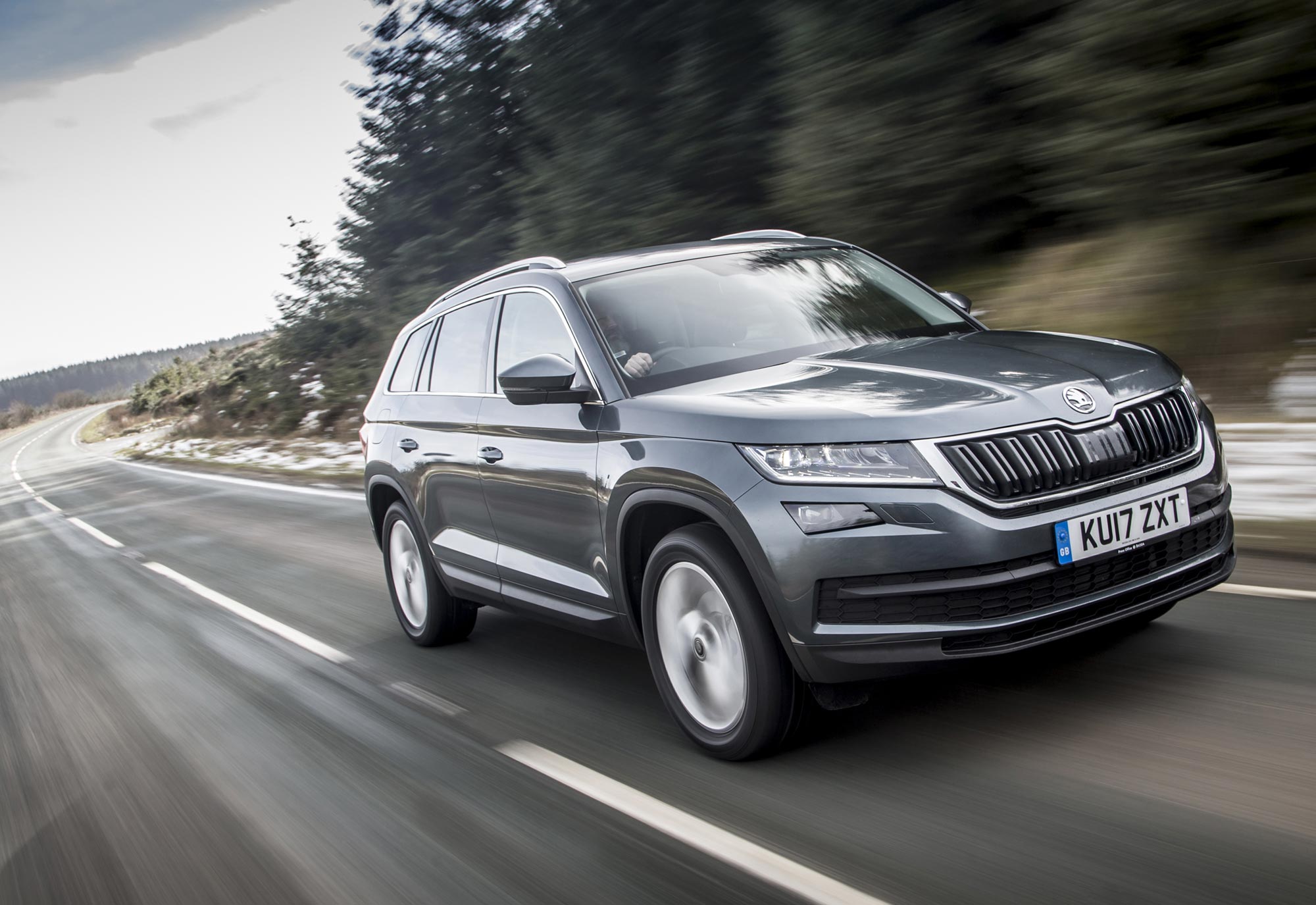Skoda is entering uncharted territory with its new Kodiaq. Chris Pickering sampled the large SUV at its UK launch.
Skoda has been carving out a reputation as a builder of practical, well thought-out family cars ever since it became part of the Volkswagen Group in the early nineties. With that in mind, it’s hard to fathom why the Czech brand has taken so long to tap into the hugely lucrative full-size SUV market. True, the Yeti has served Skoda well as a compact crossover, but the new Kodiaq takes things to an entirely different level. It offers seven seat accommodation on higher spec models (available further down the range as an optional extra) and a significant step up in boot space.
It’s a discreetly handsome design, which you could easily mistake for one of the German premium brands. Indeed, the Kodiaq shares its underpinnings with both the Volkswagen Tiguan and the Audi Q2, not to mention the Seat Ateca. It’s usefully larger than all three, though, despite being only 40 mm longer than a Skoda Octavia hatchback.
Inside, it’s all solidly constructed and sensibly laid out. There’s bags of adjustment on the driving position and plenty of head and leg room for the first two rows. Like most seven seat SUVs, the third row (where fitted) is something of a compromise. Slide the middle seats forward and you can – just about – get a pair of adults in there. On the other hand, if your third row passengers are of a suitably compact stature, you can slide one or both sections of the 60/40 split seat back to improve leg room in the middle row.
The Kodiaq also boasts one of the biggest boots in its class, with 720 litres in five-seat form, expanding to a cavernous 2,065 litres with the seats down. It’s worth bearing in mind that the additional seats do eat into that somewhat. With the third row in place there’s less boot volume than in a Ford Fiesta, and although they fold down easily and conveniently you don’t recover all of the lost space. Overall, though, it adds a useful extra dimension that’s sure to find favour with larger families.
Skoda has been busy on the tech side too. Three different grades of infotainment system are offered on the Kodiaq, with touchscreens ranging from 6.5-inch to 9.2-inch. All feature DAB radio and smartphone connectivity as standard, along with Skoda’s Care Connect system, which will alert the emergency services automatically in the event of an accident. Satellite navigation is standard from SE L spec upwards, while the top of the range Edition model gets wireless mobile charging. There’s even an option pack that will turn the Kodiaq into its own WiFi hotspot.
On the move, the Skoda feels a good deal more agile than its seven-seat capability might suggest. This is helped by the steering, which is light yet precise, and the suspension, which keeps body roll well in check. Generally, the ride is fairly good too, although it does have a tendency to fidget a little over sharper bumps and ridges.
The engine options begin with a 1.4-litre turbocharged petrol engine. That might sound small for a car of this size, but the peppy 150 PS variant feels more than adequate for everyday driving. There’s also a 125 PS version of the same engine, plus a 2-litre petrol range topper, which promises 180 PS and 0 to 62 mph in 8.2 seconds.
On the diesel side, there’s a choice of two 2-litre engines. We tried the higher-spec 190 PS unit, which proved a good fit for the Kodiaq, with plenty of torque (400 Nm to be precise) and impressive levels of refinement. However, the 150 PS version is usefully cheaper (not least because it can be had on the lower spec models) and it’s still good for 340 Nm.
The top-spec petrol and diesel engines both come with four-wheel drive and Skoda’s new seven-speed DSG gearbox as standard. This generally works well, although it can be reluctant to change down at times, which blunts the performance on steeper hills. You can override this in manual mode, but you have to use the gear selector unless you want to pay extra for the steering wheel-mounted paddles.
Most of the other models can be had in various permutations of two or four-wheel drive and manual or DSG. Not surprisingly, it’s the two-wheel drive 150 PS DSG-equipped diesel that’s the cleanest in the range, emitting just 131 g/km of CO2, with a claimed fuel economy of 56.5 mpg. The 150 PS petrol and the 190 PS diesel are relatively close on paper, but the 2-litre petrol takes a significant hit at 170 g/km of CO2 and 38.2 mpg.
Overall, the Kodiaq is a bit bigger and a bit better to drive than most of its rivals. Where it really scores, though, is value for money. On paper, it starts at £21,565 and ranges to £34,050. However, mid-range models begin at about £26,000; at which point they’re both nicer than the budget brands and cheaper than the premium offerings. Skoda hopes to tempt new buyers in from both ends of that spectrum. And based on what we’ve seen, it should have no difficulty whatsoever.










